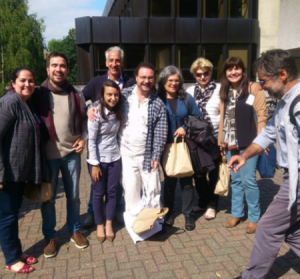From Dictatorship to Democracy: Transitional Justice in Chile
From Dictatorship to Democracy: Transitional Justice in Chile
 On October 5, 2015, Chile commemorated 25 years since its return to democracy after the violent and repressive dictatorship headed by Augusto Pinochet. Although Chile has adopted some transitional justice measures to address the gross human rights violations committed during the dictatorship, there is still work to be done in order to bring truth and justice to the victims and the society as a whole.
On October 5, 2015, Chile commemorated 25 years since its return to democracy after the violent and repressive dictatorship headed by Augusto Pinochet. Although Chile has adopted some transitional justice measures to address the gross human rights violations committed during the dictatorship, there is still work to be done in order to bring truth and justice to the victims and the society as a whole.
Just this past July, a soldier revealed to a judge the true facts regarding one of the most heinous crimes committed by the armed forces during the dictatorship. I am referring to the so called “Caso Quemados,” in which two young students, Carmen Quintana and Rodrigo Rojas de Negri, were burned and left for dead near a highway by a group of soldiers. When they regained consciousness, they were able to ask for help from a passing police patrol, which took them to the nearest hospital. With approximately 65% of his body covered in burns from the incident, Rodrigo past away four days later, while Carmen was able to recover, despite 70% of her body being covered in burns. Although Carmen has always told this story about what actually happened that day, the official story of the Army was quite different. According to the Armed Forces, Carmen and Rodrigo were carrying homemade bombs to a protest and it was these bombs, which accidentally exploded, that caused their injuries. Since the Army’s version of events has always been cited as the “official truth,” after a military judicial proceeding in 1988 Commander Fernandez Dittus was sentenced only to 300 days in prison for failing to provide medical care to Carmen and Rodrigo. In 1994, the Supreme Court sentenced him to 600 days in prison.
This past July, twenty-nine years after the crime was committed, a soldier called Fernando Guzman came forward to testify in front of a judge that the “official story” of the armed forces was not true. Guzman stated that he was part of one of the patrol that was present at the time of the crime, and after the crime his superiors had constructed the “official story,” thereafter coercing those present to tell only this official version of events. Thanks to the declaration of this key witness, the Judge, Mario Carroza, issued seven arrest warrants against the military personnel involved in the crime.
This event put human rights abuses committed during the dictatorship back on the political agenda. The commonly called “pact of silence” throughout the military was revealed through the story of the concealment of this crime, but also by Fernando Guzman who affirmatively stated the existence of these pacts as a common practice among the armed forces.
In order to put an end to these “pacts of silence” President Michelle Bachelet announced the creation of a Human Rights Unit within the Defense Ministry to facilitate the exchange of information about the crimes committed during the dictatorship.
Moreover, there has been broad, multiparty political support for the eradication of these pacts of silence and encouragement from all sides of the political spectrum for those with any information to come forward and testify. The fact remains, however, that according to official numbers, Chile continues to have 3,216 disappeared or murdered persons from the period between 1973 and 1990.
It has been 25 years since the return to democracy and members of the Armed Forces are still covering crimes and withholding vital information that could potentially lead to finding the disappeared and bring some peace to the victims and their families. It is time to break the pact of silence and contribute to the ongoing judicial proceedings and human rights investigations.
Finally, the members of the armed forces need to understand that a fundamental key to open the door towards reconciliation is in their hands and, after 25 years, it is time for them to uncover history.
### Photo: Maria Georgiou.




